Disclosure: This article contains affiliate links. We may earn a commission from purchases at no extra cost to you, which helps our travel content.
The Kalahari Desert at dusk is a masterpiece of contradictions. As our open-air Land Cruiser crests another ochre-colored dune, the vastness spreads before me—not the barren wasteland many imagine, but a thriving ecosystem pulsing with life. After six years of calling Marseille home, trading the Mediterranean's azure waters for this burnt sienna landscape feels like stepping onto another planet. Yet somehow, beneath these endless stars, I've never felt more connected to Earth's ancient rhythms.
Embracing the Kalahari's Untamed Spirit
My journey to Botswana's Central Kalahari Game Reserve began months before with a promise to myself: my 42nd birthday would be marked not with candles but with campfires, not with city lights but with stars. After years of exploring marine ecosystems with my family, this solo adventure into one of Africa's most remote wilderness areas represented a personal pilgrimage.
Our small group of six travelers plus guides ventured deep into the reserve, far beyond where day-trippers roam. Here, luxury isn't defined by thread counts but by experiences—sleeping in canvas tents that somehow manage to feel both authentic and indulgent. The camp staff had thought of everything, from solar shower bags that provided warm water at day's end to the most comfortable camping pillow I've ever used, ensuring restful sleep despite the distant lion roars.
What struck me most was the silence—a profound quiet occasionally punctuated by nature's soundtrack. No cell service, no WiFi, no digital distractions. Just the crackling fire, the occasional whooping hyena, and conversations that went deeper than any I'd had in months.
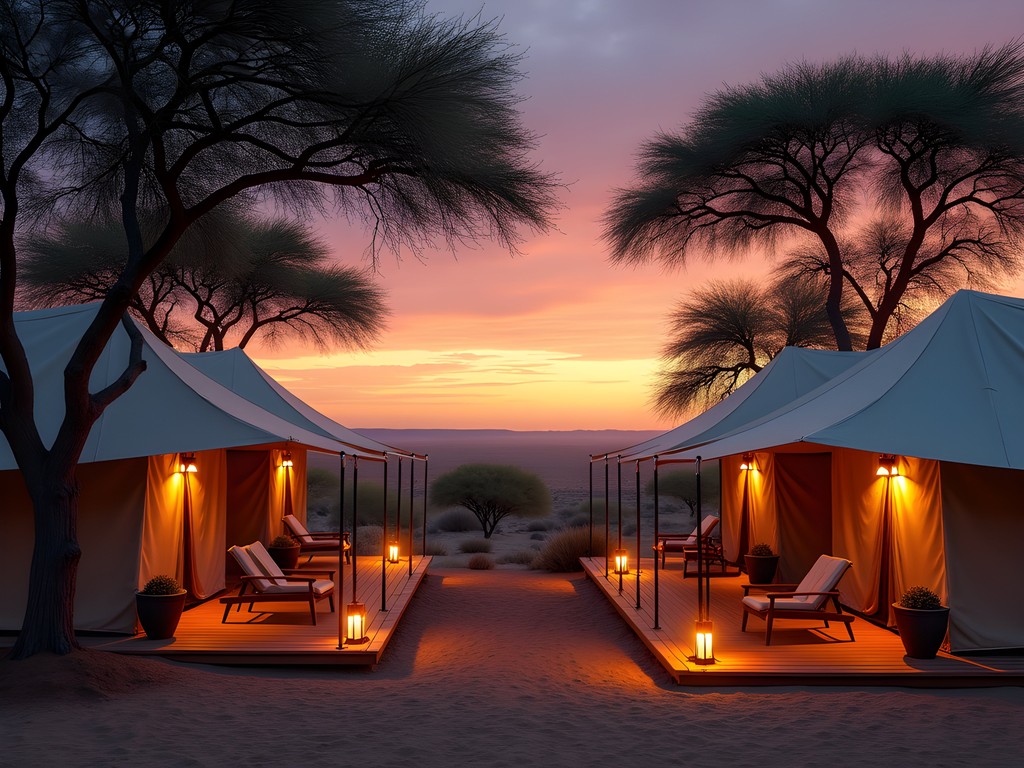
💡 Pro Tips
- Pack merino wool base layers for the surprisingly cold desert nights
- Bring a star chart app that works offline to identify constellations
- Request a tent away from the main area for the best wildlife viewing opportunities from your 'doorstep'
Wildlife Encounters in the Desert's Heart
The Kalahari defies expectations. While the Okavango Delta might claim fame for wildlife density, the Central Kalahari offers something equally precious: authenticity. Here, animals haven't grown accustomed to constant vehicle traffic. Each sighting feels earned, special, almost sacred.
On our third morning, we departed before dawn, the cold air biting at our cheeks despite it being winter in the southern hemisphere. Our guide Samuel, a San man whose ancestors have navigated these lands for millennia, spotted tracks that most of us would have missed entirely. "Desert-adapted lions," he whispered, his eyes alight with the thrill of the chase.
For three hours, we followed the pride's trail, eventually finding them lounging beneath a shepherd's tree—three females and seven cubs, their tawny coats almost invisible against the sand. Through my spotting scope, I watched the cubs play-fight while their mothers dozed, seemingly unbothered by our presence.
"They're not used to vehicles like in other parks," Samuel explained. "We must respect their space."
Beyond the iconic predators, the Kalahari revealed its specialized residents: oryx with their magnificent straight horns, meerkats standing sentinel on termite mounds, and the desert-adapted springbok that can survive without drinking water. Each evening, I'd document the day's sightings in my journal, sketching what I'd seen under the glow of my headlamp, an essential tool for camp life.
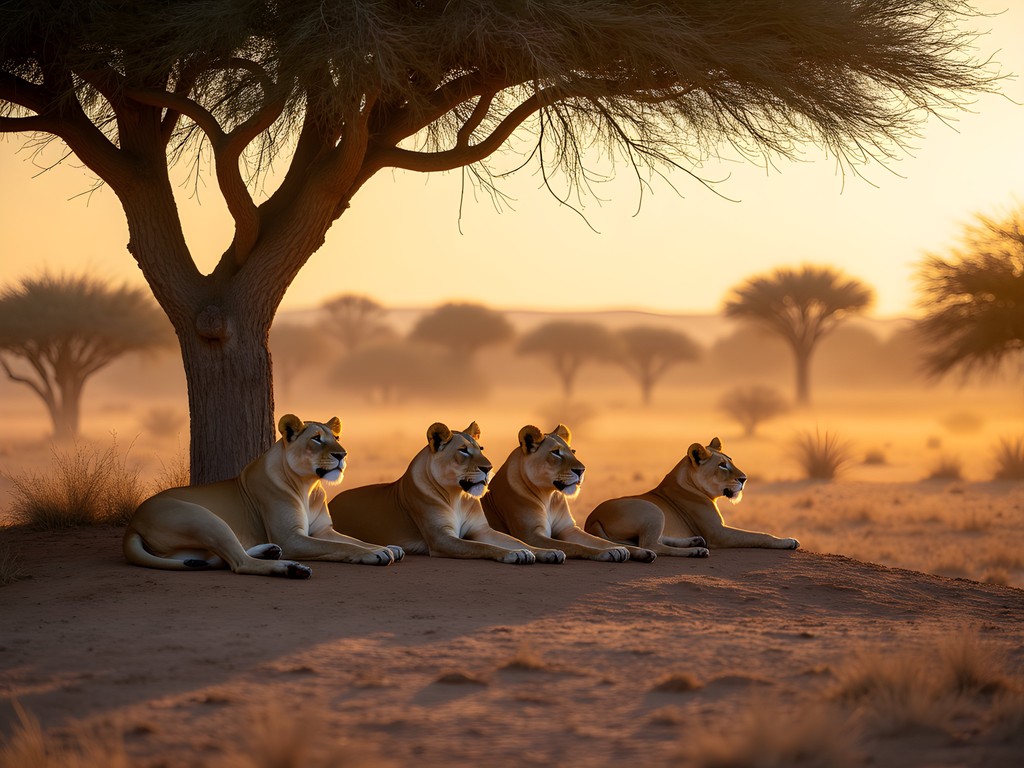
💡 Pro Tips
- Bring a good pair of 10x42 binoculars—spotting wildlife in this vast landscape requires quality optics
- Always listen to your guide about safe distances from predators
- The best wildlife viewing happens at dawn and dusk, so adjust your sleep schedule accordingly
Nights Under Ancient Stars
In Marseille, light pollution dims all but the brightest stars. In the Kalahari, the night sky explodes with light—billions of stars, planets, and the sweeping arm of the Milky Way creating a ceiling so magnificent it brought tears to my eyes. Each evening after dinner, our group would gather around the campfire, sharing stories while our guide pointed out constellations visible only in the Southern Hemisphere.
One night, we ventured further from camp for a sleep-out experience. Armed with nothing but sleeping bags rated for freezing temperatures and sleeping pads to insulate us from the cooling sand, we formed a circle under the open sky. The vulnerability was palpable—no tent walls between us and the wild—yet I've rarely felt safer, cradled in nature's vastness.
"In the Kalahari, we are never alone," Samuel said, gesturing to the stars. "Our ancestors watch from above." That night, I dreamt of ancient hunter-gatherers crossing these same sands, following the same stars that now guided my own journey.
The night sounds became a familiar lullaby: the distant whooping of hyenas, the occasional rumble of elephants communicating across miles, and the constant, gentle whisper of wind across the dunes. By the third night, the initially intimidating darkness had transformed into a comforting blanket.

💡 Pro Tips
- Bring a lightweight but warm sleeping bag rated for at least 30°F/0°C even for 'luxury' camping
- Consider taking a basic astronomy course before your trip to fully appreciate the southern sky
- Pack earplugs if you're a light sleeper—nocturnal wildlife can be vocal
Cultural Immersion with the San People
No Kalahari experience would be complete without learning from its original inhabitants. The San people have thrived in this seemingly inhospitable environment for over 20,000 years, developing profound knowledge of its plants, animals, and seasonal rhythms.
Midway through our expedition, we spent a day with a San community, learning survival skills that have sustained generations. A grandmother with skin weathered like the landscape showed me how to find water-bearing tubers hidden beneath the sand. Children giggled as they taught us their tracking games, their eyes catching details my city-trained perception missed entirely.
"The desert gives everything we need," our translator explained as we watched a young man demonstrate fire-making using nothing but sticks and dried grass. "We don't take more than necessary."
I was particularly fascinated by their traditional medicine knowledge. When I mentioned my dry skin—a casualty of the desert climate—an elder brought me a natural balm made from mongongo nuts and marula oil. The difference was immediate, and I've since ordered this product for my bathroom cabinet in Marseille, a daily reminder of Kalahari wisdom.
That evening, we participated in a traditional trance dance around the fire. The rhythmic clapping, singing, and movement created a hypnotic atmosphere as dancers connected with ancestral spirits. Despite the cultural distance between us, the experience felt profoundly universal—humans seeking meaning under the same stars that have witnessed our entire evolutionary journey.
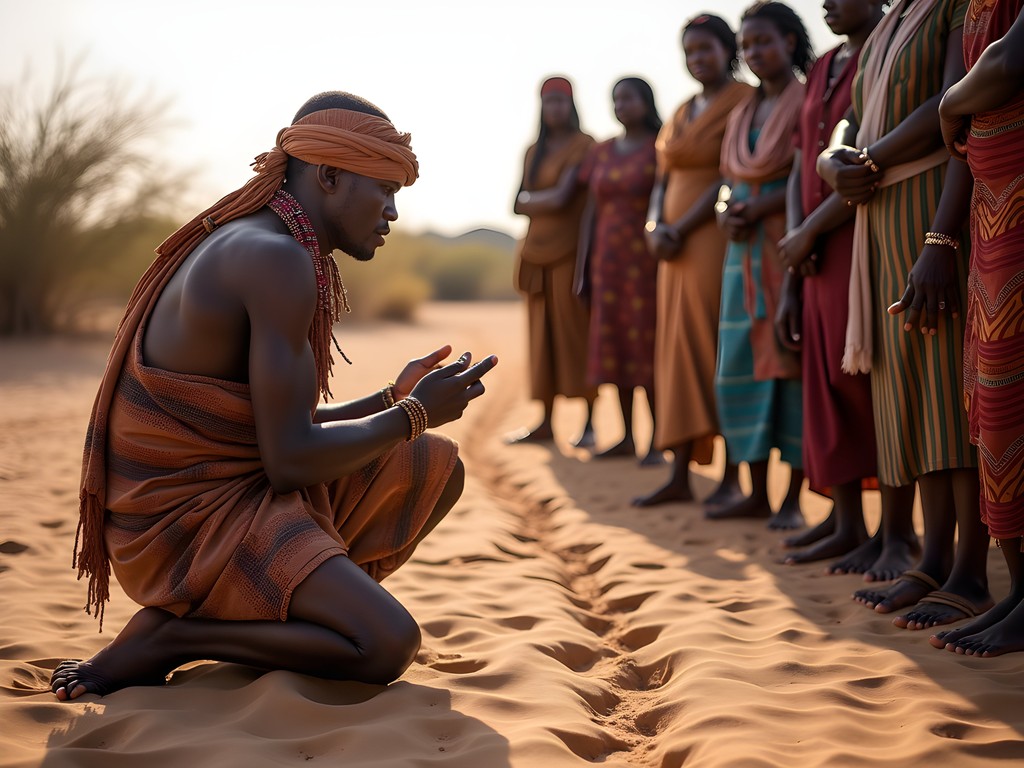
💡 Pro Tips
- Bring small, thoughtful gifts for community visits (school supplies are always appreciated)
- Learn a few basic greetings in the local language before your visit
- Ask permission before photographing people, and offer to share digital copies if possible
Sustainable Luxury in Earth's Last Wildernesses
The concept of luxury safari camping in the Kalahari represents a fascinating evolution in adventure travel. Our expedition with solar lanterns illuminating our pathways and reusable water bottles eliminating single-use plastic demonstrated how high-end experiences can coexist with environmental responsibility.
Our camp operated on a leave-no-trace principle, with all waste packed out and water usage carefully monitored. Solar panels provided limited electricity, while the absence of permanent structures meant the landscape would return to its natural state once we departed.
Perhaps most importantly, our expedition directly supported conservation. A significant portion of our (admittedly substantial) fees went to anti-poaching efforts and community development programs that incentivize wildlife protection over exploitation.
"When the animals bring more money alive than dead, conservation becomes easier," our guide explained one evening. "Tourism that respects both nature and culture can save these places."
As someone who spent years fundraising for environmental nonprofits, I was impressed by the operation's transparency. We visited a school and clinic funded by tourism dollars, meeting community members who now worked as guides, cooks, and camp managers rather than turning to less sustainable livelihoods.
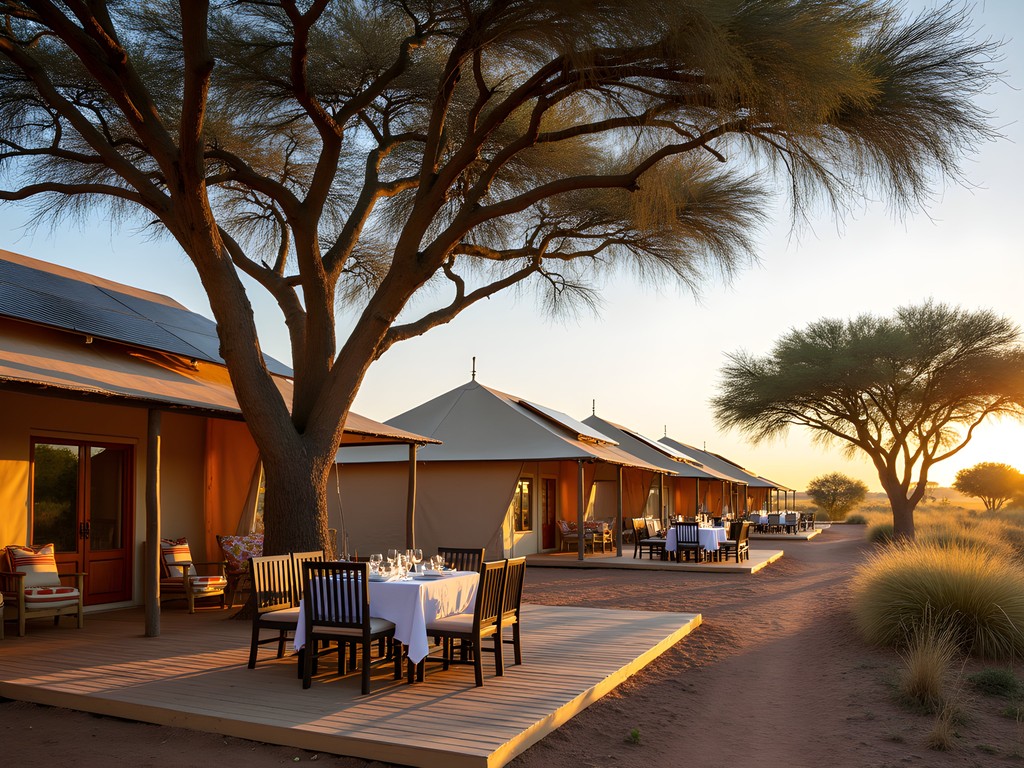
💡 Pro Tips
- Research operators with proven conservation credentials before booking
- Pack biodegradable soap and shampoo for wilderness camping
- Consider carbon offsetting your flights to and from Botswana
Final Thoughts
As our Land Cruiser bumped along the sandy track on our final morning, leaving behind a week of wilderness immersion, I found myself already plotting my return. The Kalahari had worked its magic on me in ways I hadn't anticipated. Beyond the wildlife encounters and stargazing, it was the profound disconnection from digital life that proved most transformative—a reset for my overstimulated modern brain.
For those considering their own Kalahari adventure, I offer this: come with an open heart and a willingness to embrace discomfort alongside luxury. The temperature swings are extreme, the dust omnipresent, and yes, occasionally you'll find scorpions in your boots (always shake them out!). But these minor inconveniences fade against the privilege of experiencing one of Earth's last great wildernesses.
From my adopted home in Marseille to the ancient sands of the Kalahari, I'm reminded that true adventure requires stepping beyond familiar shores. Hasta la próxima vez, desierto hermoso—until next time, beautiful desert. Your stars will continue to call me back.
✨ Key Takeaways
- The Central Kalahari offers authentic wildlife encounters away from tourist crowds
- Cultural experiences with the San people provide invaluable insights into sustainable desert living
- Luxury wilderness camping combines comfort with minimal environmental impact
- Winter (June-August) offers comfortable daytime temperatures and excellent wildlife viewing
- Disconnecting from technology creates space for deeper connection with nature and self
📋 Practical Information
Best Time to Visit
May through September (winter/dry season)
Budget Estimate
$800-1,200 per person per night for luxury camping safaris
Recommended Duration
7-10 days
Difficulty Level
Challenging

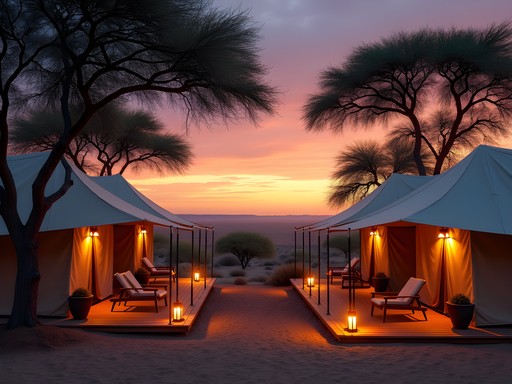

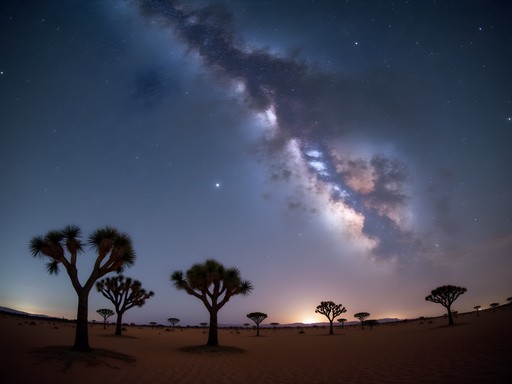
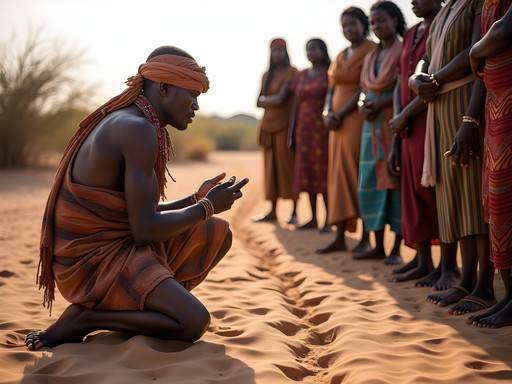











Comments
nomadqueen
How was the food situation? Did you have to bring your own supplies or was it all provided by the tour company?
Nicole Russell
Evelyn!! This post is EVERYTHING! I did a similar trip last spring and it was life-changing! For anyone planning to go - definitely spend time with the San people if you can. Their tracking skills blew my mind - they found a honey badger den just from tiny marks in the sand that I couldn't even see! Make sure you bring a good camera with a zoom lens for wildlife shots, and don't forget a proper sleeping bag - those desert nights get COLD! I used my sleeping bag and was so thankful for the extra warmth rating. Already planning my return trip for next year! 💫🌵
nomadqueen
Nicole, did you feel the guided tours with the San people were respectful? I've heard mixed things about cultural tourism and want to make sure I'm supporting the right kind of experiences.
Nicole Russell
Great question! I did tons of research before booking. The key is finding tours run BY the San communities themselves, not just featuring them. The group I went with (Dqae Qare San Lodge) is owned and operated by San people, with profits going back to their community. Definitely ask who benefits from your tourism dollars!
starchamp3132
WOW those sunset pics are INCREDIBLE!!! 😍😍😍
Jean Wells
Your description of the night sky brought back vivid memories of my solo trip there last year. The Kalahari stars are unlike anything I've witnessed elsewhere - the complete absence of light pollution creates an astronomical theater that's truly humbling. I found the transition from scorching days to cold nights fascinating from a biological adaptation perspective. Did you get a chance to learn about how the local fauna manages these extreme temperature variations? The springbok's thermoregulation abilities particularly impressed me.
journeygal
This looks amazing! How safe did you feel camping in the Kalahari? I've always wanted to go but worried about predators at night...
Evelyn Cox
Great question! The guides are incredibly knowledgeable about safety. Camp is always set up in areas where predators are less likely to wander, and there's always someone on watch. It feels wild but I never felt unsafe!
journeygal
Thanks Evelyn! That's really reassuring to hear. Might just have to book that trip after all!
mountainvibes
OMG THOSE LION PHOTOS!!! 🦁🦁🦁 How close were you?? I'd be terrified and thrilled at the same time! Adding this to my bucket list RIGHT NOW!
Evelyn Cox
Pretty close! Maybe 15-20 meters? The vehicles are open-sided but the guides are incredibly knowledgeable about animal behavior. You feel safe but still get that heart-racing excitement!
mountainvibes
That's amazing! Did you use a special camera lens or just your phone?
Evelyn Cox
I used my DSLR with a 70-200mm lens for most wildlife shots. Phone cameras have come a long way but for safari photography, a decent zoom lens makes all the difference!
Kimberly Murphy
Evelyn! You've captured the essence of the Kalahari perfectly! I was there during the green season (January) and it was a completely different experience - the desert was transformed with patches of green and temporary water holes attracting incredible wildlife. The thunderstorms rolling across the plains were some of the most dramatic I've ever photographed. For anyone planning a trip, don't overlook the green season! It's less crowded and the contrast of life blooming in the desert is phenomenal. Did you visit any of the pans? Deception Valley was my absolute highlight - we saw a cheetah chase at sunrise that I'll never forget!
oceangal1451
I did a similar trip in 2023 but in the Okavango instead of the Kalahari. The contrast must be fascinating! How was the camping setup? Our tents were surprisingly comfortable with actual beds, but I'm wondering if the desert camps are more rugged?
Kimberly Murphy
Not Evelyn, but I did both Okavango and Kalahari last year! The Kalahari camps tend to be more basic - expect dome tents and sleeping pads rather than the raised platform tents with proper beds you get in the Delta. The trade-off is worth it though - the stars and silence of the desert are incomparable!
bluebuddy
Planning a similar trip for next year - how was the temperature at night? Did you need serious cold weather gear?
Evelyn Cox
Nights get surprisingly cold! Definitely pack layers - I used my down jacket every evening. Days are hot, but once the sun sets, temperatures drop dramatically.
bluebuddy
Thanks for the heads up! Will definitely pack accordingly.
Marco Flores
Evelyn, your writing transported me straight back to my own Kalahari experience last year! That moment when the sun sets and the desert transforms from scorching heat to cool mystery is pure magic. I remember our guide pointing out aardwolf tracks one morning - we followed them for nearly an hour before spotting the elusive creature. Did you get any special wildlife sightings at dawn? That's when I found the desert truly came alive with activity. Your experience with the San people sounds more immersive than mine though - I only had a brief cultural demonstration.
Evelyn Cox
Dawn was incredible, Marco! We spotted a family of meerkats emerging from their burrow and a pair of bat-eared foxes hunting. The San experience was definitely a highlight - our guide had family connections which made it more personal.
Venture X
Premium card with 2X miles, $300 travel credit, Priority Pass